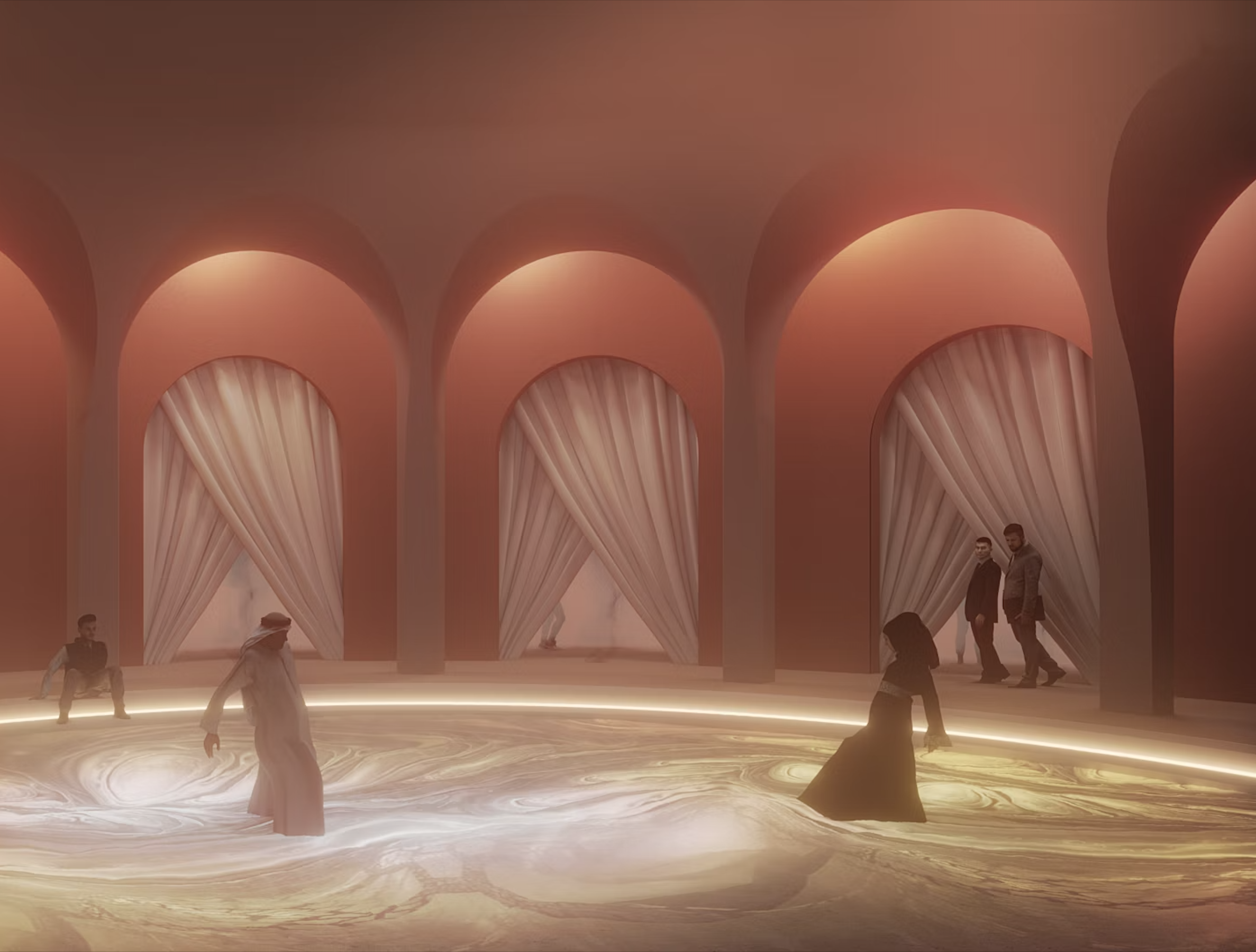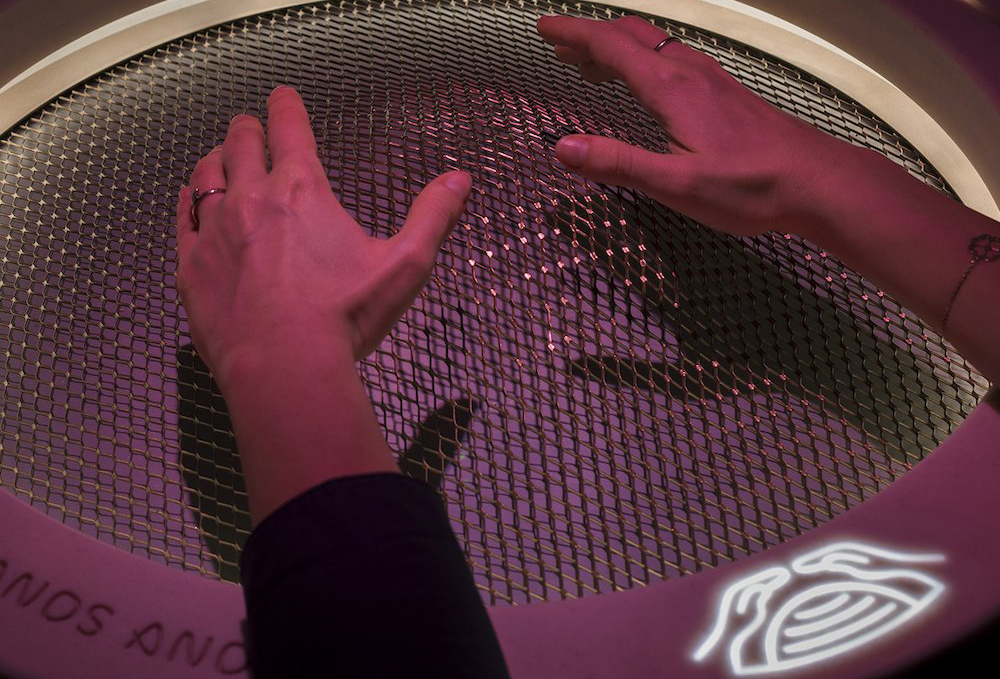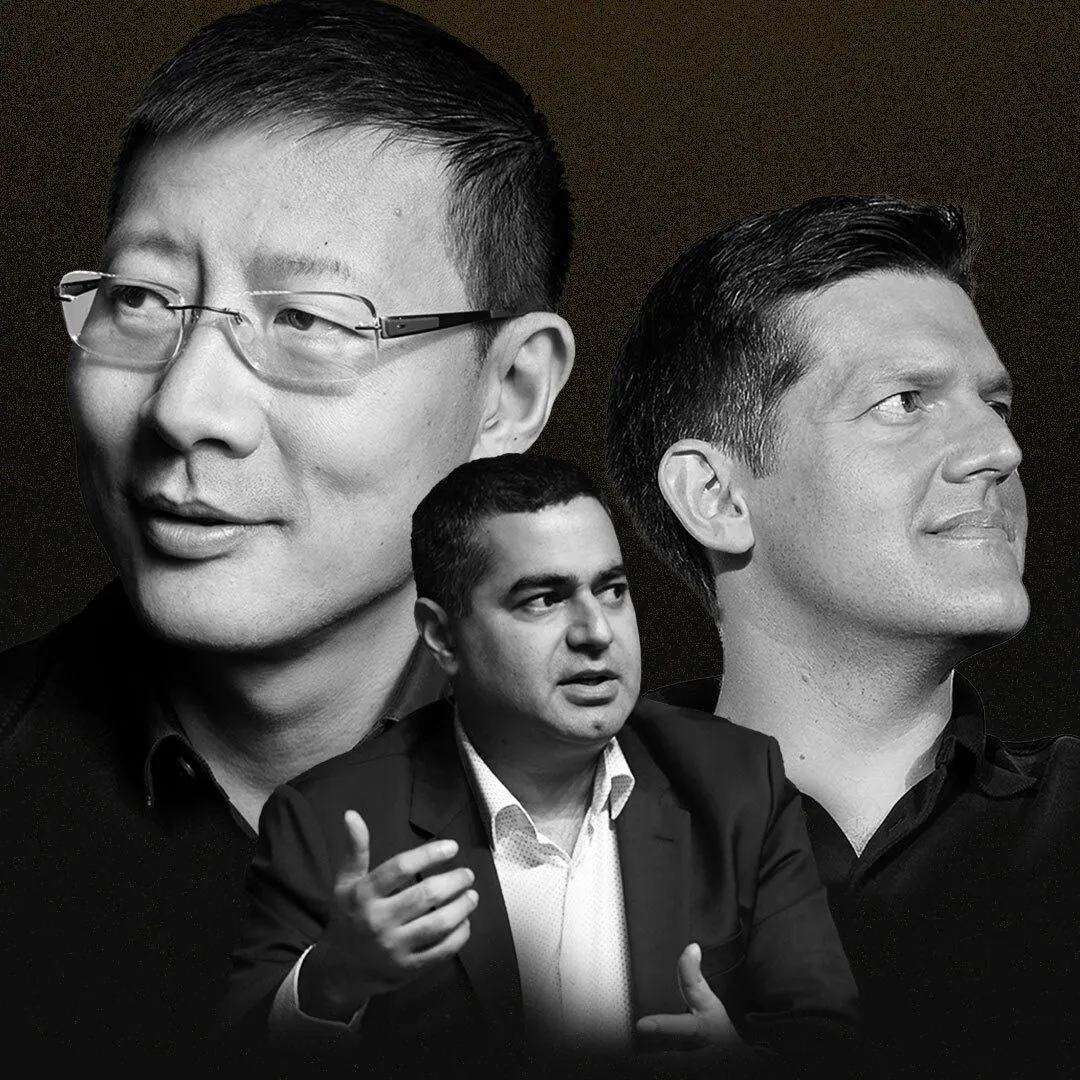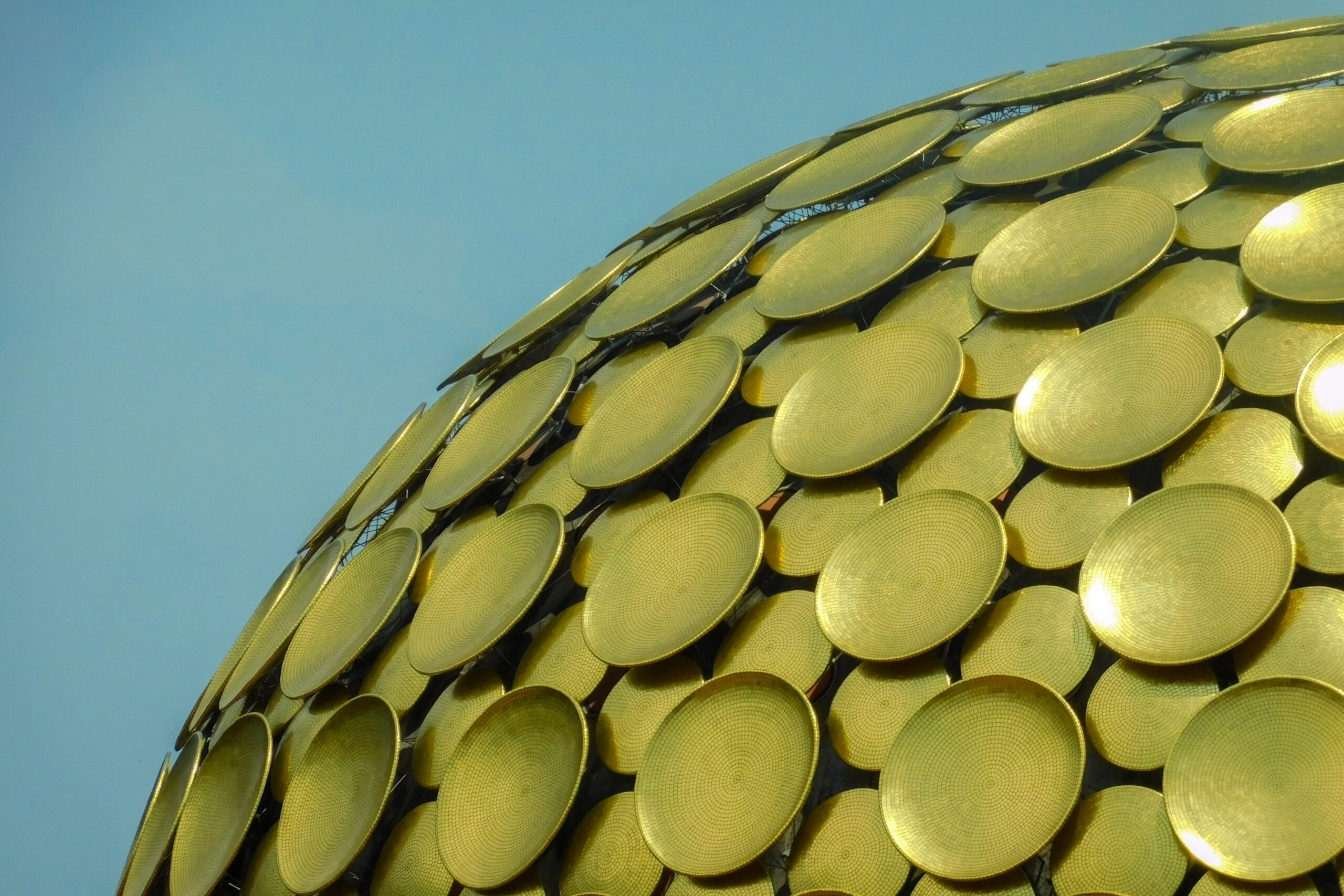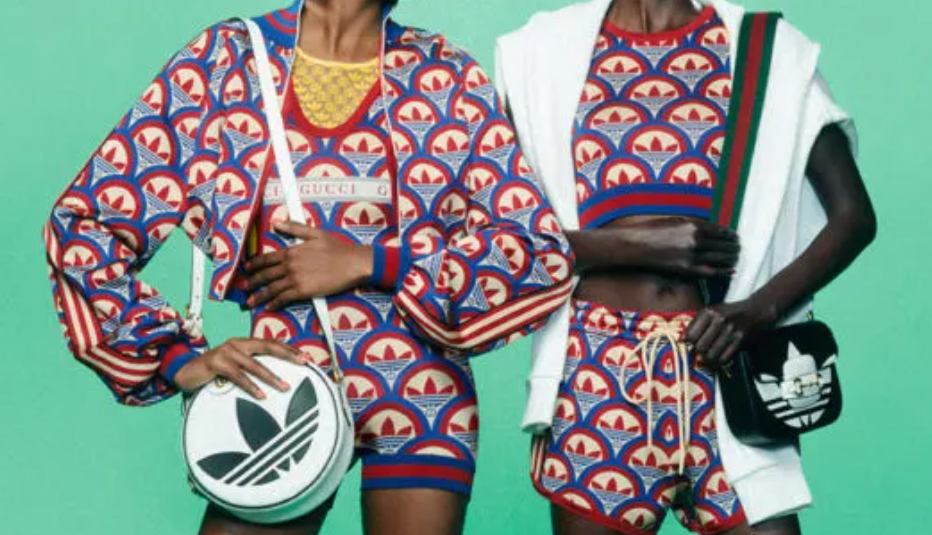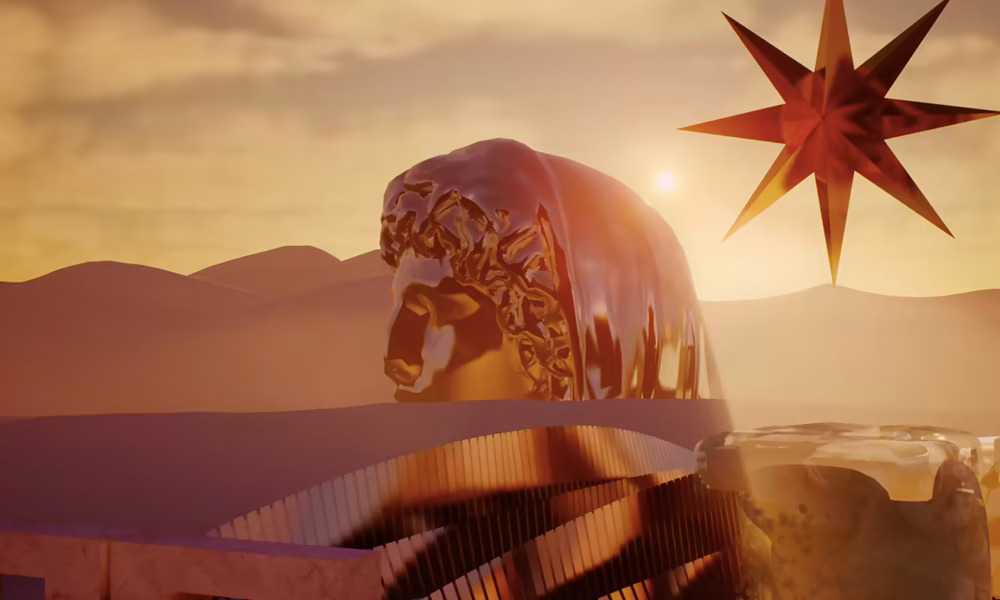A city that promises a futuristic skyline adorned with skyscrapers, man-made islands and ultra-luxurious lifestyle, Dubai has shaken hands with spirituality, wellness and a meditative outlook towards life with its Al Waha zone at the Museum of the Future. As I walked into the torus-shaped building with an open centre and a beautiful inscription in Arabic running throughout the structure, I was mesmerised and hopeful in equal measures. The inscription is a poem written by the king of Dubai, Mohammed bin Rashid Al Maktoum, which roughly translates to: We might not live for hundreds of years, but the products of our creativity can leave a legacy long after we are gone.
Al Waha, which means ‘The Oasis’ in Arabic, is a zone in the third chapter out of five in the museum. Located on the third floor of a seven-story building, the zone allows you to reconnect with your body and mind through immersive exhibits and therapies such as The Sand Bath. With each step on the soft carpet that resembled sand in a desert, I could feel all my senses dancing in a melodic rhythm. A good mixture of salmon and pastel pink colours on the walls of the zone felt like soft cushions for the eyes.
As I walked through the main corridor and into a space with a series of archways leading to a central pathway, I couldn’t help but marvel at its modern and artistic design. Philosophically, the pathway may hint at the Buddhist concept of impermanence, where each archway suggests a temporary habitat; or it may suggest the path to enlightenment, where one needs to progress through various transitions to reach the final destination.
(L-R) The Archway; The Sand Bath
The Museum of the Future dares to envision life 50 years from today; hence, it is filled with predictions based on scientific data and research. One such prediction inscribed on the wall read: ‘Despite our technological abundance, depression, anxiety, loneliness, and addiction remain common. In 2030, depression passed obesity as the world’s greatest health risk. Too little has changed in the 40 years since.’ It has been well-documented that existing within an environment of instability and constant noise is exhausting and unhealthy. For those seeking a way out of modern struggles, Al Waha presents a way in.
Before entering Al Waha, I passed through another chapter on the second floor called ‘The DNA Library,’ an immersive and mammoth installation showcasing the planet’s biodiversity. On other floors, there were talking robots, futuristic depictions of supercars, and medical equipment that will be used in the coming years. There is a stark yet harmonious contrast between Al Waha and the other chapters of the museum. While the intrinsic mission of the entire building is to envision the times ahead, the Al Waha zone reimagines the importance of living in the present moment. This cultural contrast is aesthetically presented in the form of a circular meditation room with comfortable seats and lounges.
Use of haptics and soundscape at Al-Waha
Toward the end of the exhibit, the designers constructed a grey wall with a banner that reads ‘please make a wish.’ The wall adjacent to it contains the translation of the word ‘gratitude’ in a hundred different languages. A wonderfully constructed installation of the different translations evokes the feeling of spiritual oneness. As I paused before the wall, I was invited to reflect on my desires and goals. It served as a poignant reminder of the interconnectedness of humanity, juxtaposing the act of making a wish for the future with the feeling of gratitude in the present.
The Museum of the Future is the brainchild of Killa Design, an architectural firm in Dubai headed by Shaun Killa, who has envisioned various projects in the Middle East, including Marsa Al-Arab and Bahrain World Trade Center.
As we step into the future, the zone reminds its visitors to maintain a healthy relationship with ever-changing technology. Pausing, reflecting, and remaining still are emphasised as predominant features of a happy and fulfilled life.
Words by Raj Ajay Pandya.
Featured image courtesy Museum of the Future, Dubai.
